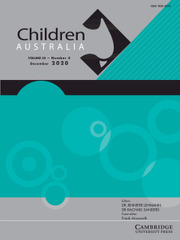No CrossRef data available.
Article contents
Social Development, its Contexts, and Child Welfare
Published online by Cambridge University Press: 15 May 2025
Extract
Child welfare agencies and workers are often so besieged by pressures from all sides that they may lose sight of their purposes. They may mistake their current programs for their reasons for being. Daily activities in agencies are frequently determined by crises in the lives of societally unintegrated children and youth. They may be called neglected and/or abused, disturbed and/or deliquent. What they tend to have in common, whatever label they are given, is that they are somehow peripheral to their society, undervalued by it, and often victimized. Is it any wonder that children and youth become alienated, feeling unbelonging and depressed? Or that there are high staff turnover, under-funding and organizational emergencies in agencies mandated to provide primarily remedial (after-the-pain) services? Under these circumstances, practitioners have little opportunity to review the assumptions, as well as the effects of their daily work.
Information
- Type
- Research Article
- Information
- Copyright
- Copyright © Cambridge University Press 1987
Footnotes
This article first appeared in “Social Work Papers“ of The School of Social Work, University of Southern California. Permission has been given to publish it in Australian Child & Family Welfare Journal.

